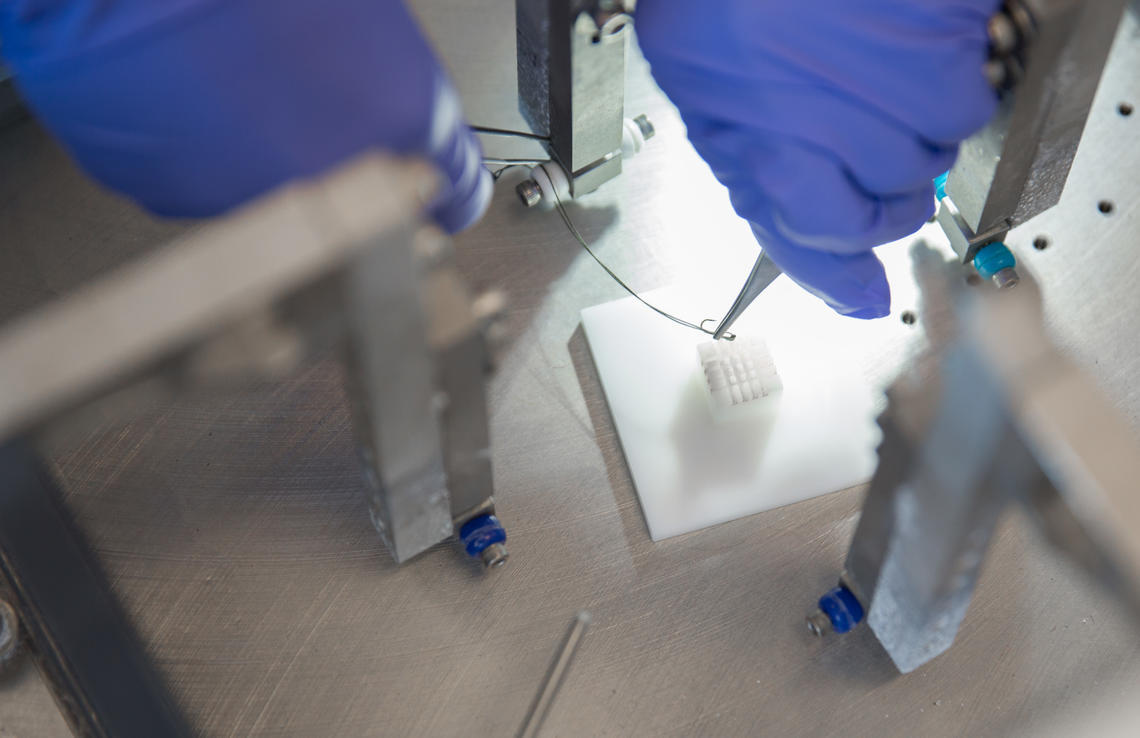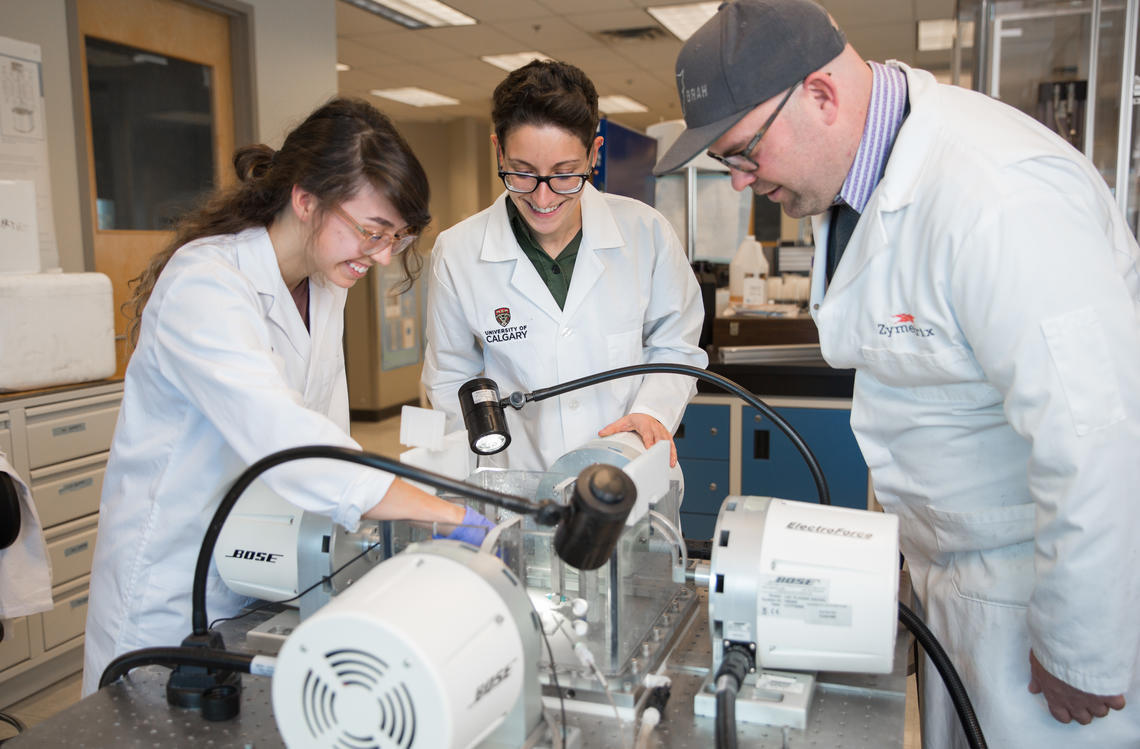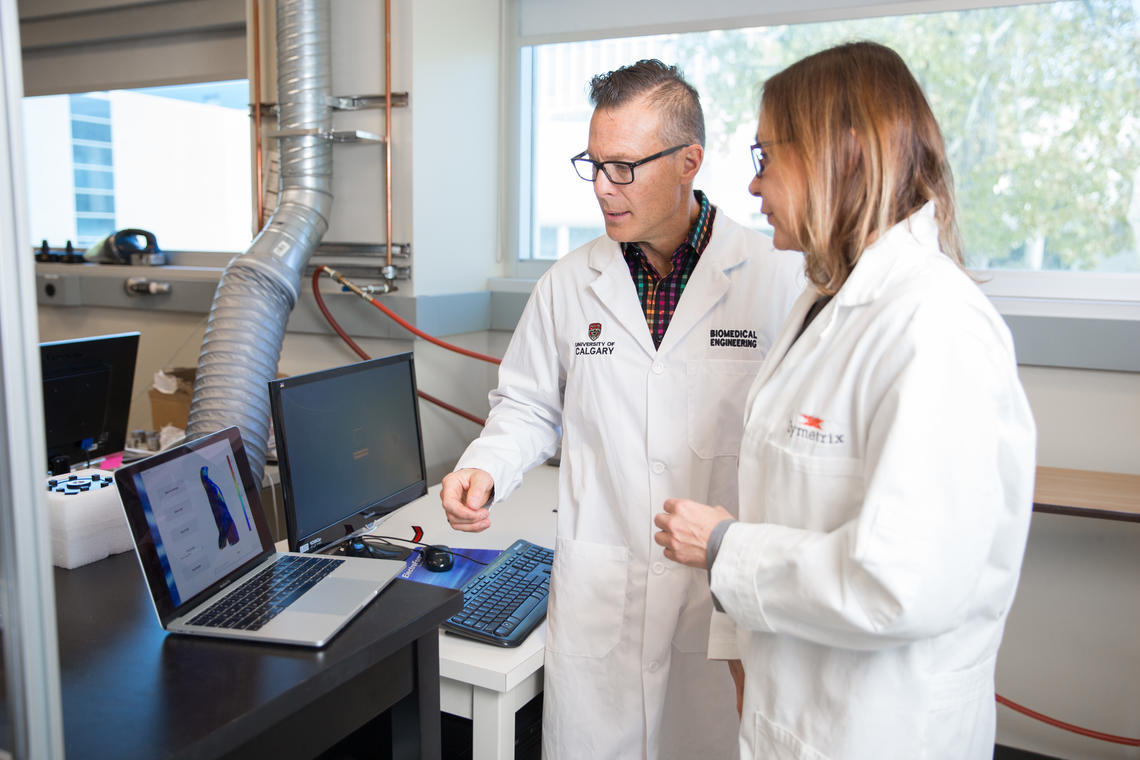Health IT Imaging Software to Assess Aneurysm Wall Strength
Developing imaging software to help vascular surgeons gauge the strength of the aorta to help decide whether to perform surgery

Planar biaxial tensile testing system used to characterize tissue properties
Every seven minutes someone dies of heart disease or stroke in Canada. BME researchers are developing a tool that will provide more information to vascular surgeons as they determine whether to perform risky surgery to repair damage to the aorta, the main artery out of the heart.
ViTAA (Virtual Touch Aortic Aneurysm) is a health information technology (IT) imaging software that produces a topographically accurate mapping of the wall strength for individual aneurysms. The software relies on understanding the relationship between microstructure, function and disease in soft biological tissues. It will give vascular surgeons the ability to accurately estimate the potential of an aortic aneurysm to rupture. BME researchers estimate that ViTAA could reduce sudden death due to aneurysm rupture by 50 per cent, saving the lives of about 1,000 patients every year in Canada and opening the door to a new gold standard in the field.
This collaborative research project has led to the formation of the start-up company ViTAA.

Alina Ismaguilova (left), Arianna Forneris (middle) and Richard Beddoes (right) are students in the Biomedical Engineering graduate program

Project co-leads Dr. Randy Moore (left) and Dr. Elena Di Martino (right)
Team
Dr. Elena Di Martino (Co-lead)
Dr. Randy Moore (Co-lead)
Partners
McGill University
CHUM Montreal
Karolinska Institute Stockholm
